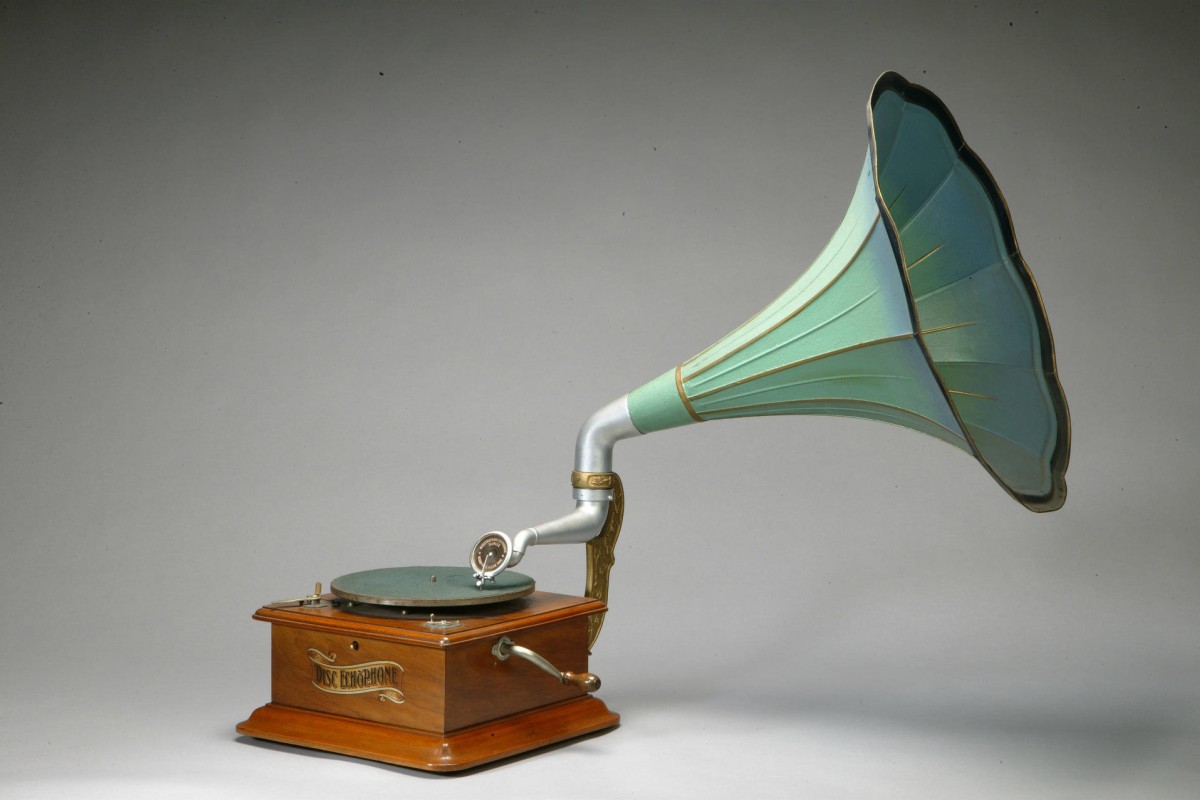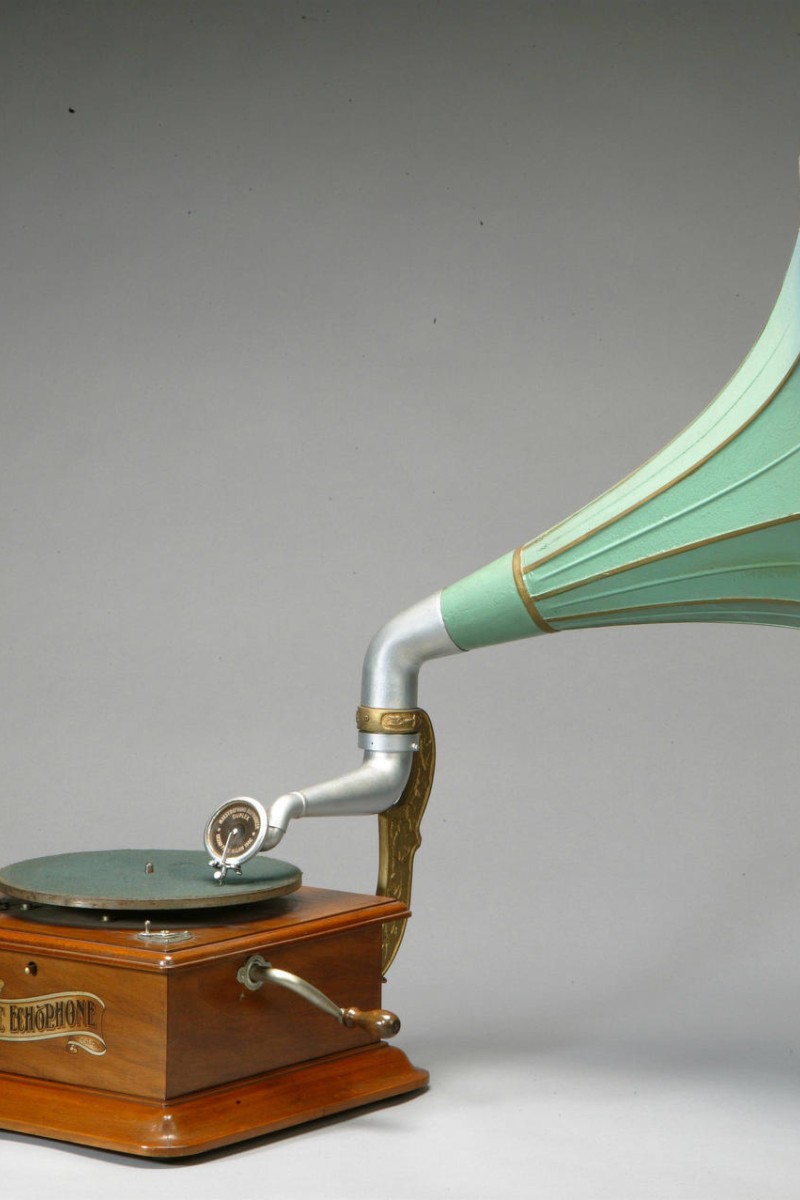 A gramophone, the early version of a record player.
A gramophone, the early version of a record player.Do you know what a mutoscope is? Or have you ever wondered how a sundial works?
The Science Museum's special exhibit, "Western Scientific Instruments of the Qing Court", is a great place not just to learn about history, but also to learn how some old scientific devices work. With everything from guns to gramophones, this collection is a treat for the eyes as well as the brain.
The exhibition is divided into eight sections: painting, astronomy, mathematics, measurement, medicine, weapons, clocks and watches, and articles for daily use. Richard Kwok Tsz-lun, assistant curator at the Science Museum, gave Young Post a guided tour.
The weapons section is full of guns. There are muskets, flintlocks, handguns, and even an iron gun used by Emperor Kangxi.
Unlike a modern gun, a musket bullet doesn't have any gunpowder in it. People had to load the gunpowder into the bullets. With older matchlock guns, people even had to light a fuse to fire it.
This is very different from today, when you simply need to pull the trigger.
The astronomy section is the most interesting to look at. There are lots of displays, star charts, and sun, moon and star dials. There's even a meteorite exhibit. This collection is a reminder of how important the sky was to people in ancient times, something we can forget when we're indoors all day.
The sundials, moondials and stardials are particularly interesting. They're like early versions of clocks. A sundial works by tracking the position of the sun across the sky. It has a stick in the centre and numbers in a circle around it, just like on a clock. Depending on where the sun is in the sky, the stick will make a shadow on a different number, and this tells you what time it is. The exhibition has interactive displays where visitors can use a dial and flashlight to understand how it works.
The maths section is another area that has a lot of tools we don't need anymore, thanks to calculators and computers.
One of these is a proportional compass. The name sounds scary, but it's basically two rulers connected by a hinge. In the past, it was used for lots of different things, such as solving tricky maths problems or helping sailors find their way out at sea.
This section also has a mechanical calculator. This is basically a machine for counting. There are 10 dials on a rectangular box. Each dial has the numbers one to nine, and represents a different amount. For example, the first dial is the single digits one to nine. The second dial is for tens, the third dial for hundreds, the fourth dial for thousands, and so on.
If you turn the first dial all the way round, the second dial will then automatically turn to register "one" - that is, one ten. If you turn the second dial 20 times, the third dial with automatically turn twice to register two hundreds, or 200. There is an interactive version for visitors to try and see how it compares to their smartphones.
Some things are more familiar. The articles for daily use section has things you might see in old movies, including some gramophones. A gramophone was the early version of the record player. A needle reads the texture of the disc, in much the same way as a laser reads a DVD.
There is also a mutoscope, which is used to look at pictures. Looking into the mutoscope is like watching a slide show, and you click through the pictures one at a time. Think of it as an early version of Instagram. Maybe while you're there, you can take a selfie with the mutoscope and post it on Instagram, just to show how far science has come.
The exhibit runs until September 23.
